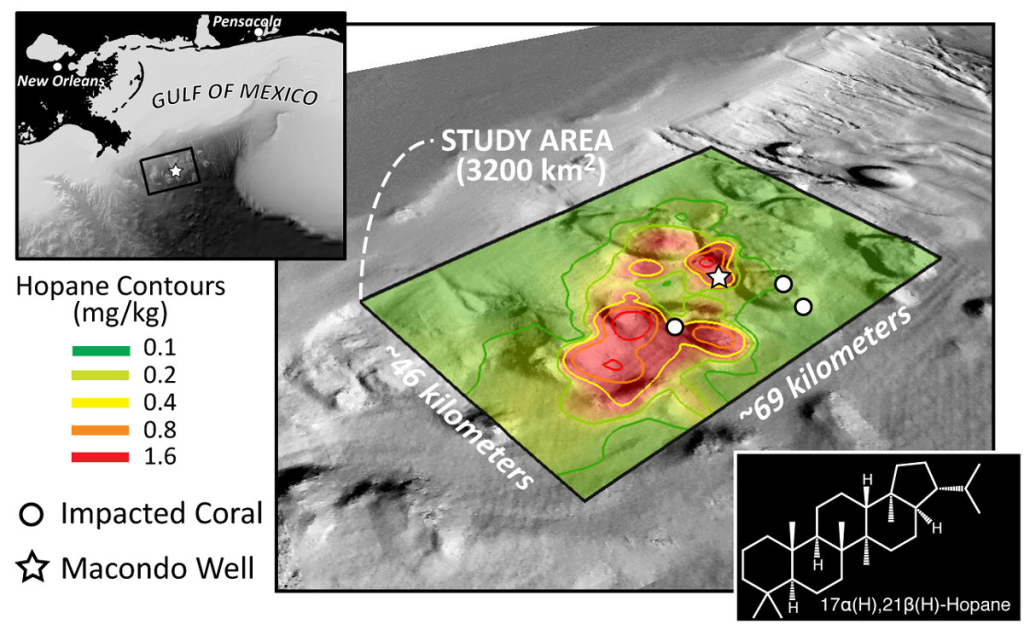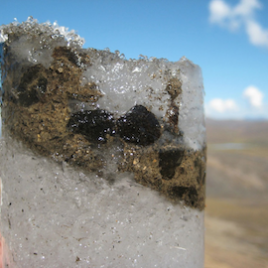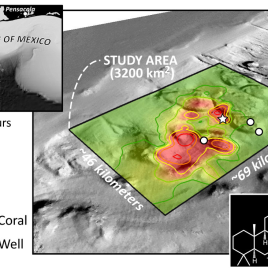
Hydrocarbon contamination from Deepwater Horizon at the seafloor near the Macondo Well, with dots indicating affected coral communities. Lower right inset depicts the molecular structure of hopane. (Credit: Image courtesy of G. Burch Fisher.)
After the 2010 Deepwater Horizon incident, the fate of around two million barrels of oil out of the five million barrels released in the Gulf of Mexico was uncertain. R
esearchers now estimate that much of these two million barrels has settled on the ocean floor around the well at a depth of 1.5 km. They looked for hopane, a biomarker of crude oil, in seafloor sediment core samples.
Their analysis suggests that the oil initially was suspended in deep waters and then settled to the underlying sea.
Original research paper published in PNAS on October 27, 2014.
Names and affiliations of selected authors


